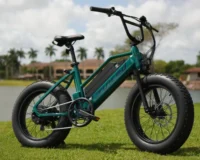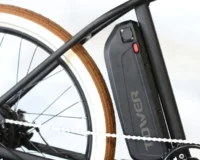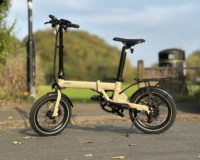How Long Do Electric Bike Batteries Last?
Electric bikes, or e-bikes, have surged in popularity as a convenient and eco-friendly mode of transportation. However, one of the most critical aspects for potential buyers and current users alike is understanding how long the battery will last. The lifespan of an e-bike battery can significantly impact the overall value and usability of the bike. Typically, e-bike batteries last between 3 to 5 years, which translates to approximately 1,000 to 1,500 charge cycles. This article explores the types of e-bike batteries, factors affecting their lifespan, maintenance tips, and practical advice to maximize battery performance.
Types of Electric Bicycle Batteries
Electric bicycles primarily use four types of batteries, each with its unique characteristics and lifespans. Understanding these differences is essential for making an informed decision.
1. Lithium-Ion Batteries
Lifespan: 1,000 to 1,500 charge cycles (approximately 3 to 5 years)
Features: Lithium-ion (Li-ion) batteries are the most common type used in e-bikes due to their high energy density, lightweight design, and low self-discharge rate. They do not suffer from the “memory effect,” which can reduce the usable capacity of the battery if it’s not fully discharged before recharging. This makes them an efficient choice for users who want to maximize their riding time.
2. Nickel-Metal Hydride (NiMH) Batteries
Lifespan: 500 to 1,000 charge cycles (around 2 to 4 years)
Features: NiMH batteries are heavier and typically have a lower energy density compared to lithium-ion batteries. However, they are more environmentally friendly and often less expensive. While they offer a decent lifespan, they do not perform as well in extreme temperatures and can be less efficient in terms of energy use.
3. Lead-Acid Batteries
Lifespan: 200 to 500 charge cycles (about 1 to 3 years)
Features: Lead-acid batteries are the oldest type of rechargeable batteries and are known for their low cost. However, they are bulky and heavy, making them less suitable for modern e-bikes. Their low energy density and shorter lifespan mean they are generally reserved for lower-cost models or specific applications.
4. Lithium Polymer (LiPo) Batteries
Lifespan: 500 to 1,000 charge cycles (approximately 3 to 5 years)
Features: LiPo batteries are a variant of lithium-ion batteries but are designed to be lighter and more flexible in terms of shape and size. They often come at a higher price point and provide good performance, but safety concerns regarding swelling and potential fire hazards mean they require careful handling.
Factors Affecting Battery Life
Several key factors can influence the lifespan of an e-bike battery, and understanding these can help users make better choices regarding maintenance and usage.
1. Battery Type
As mentioned, the type of battery plays a significant role in determining overall lifespan. Lithium-ion batteries generally offer the longest life, while lead-acid batteries tend to wear out much more quickly. When investing in an e-bike, it’s crucial to consider the battery type, as this will directly impact how often you need to replace it.
2. Charge and Discharge Cycles
Every battery has a maximum number of charge and discharge cycles. Frequent cycling can gradually diminish its ability to hold a charge. Each time you charge your battery, it undergoes a cycle, and as it ages, it loses capacity. Therefore, minimizing unnecessary charge cycles can help extend battery life.
3. Charging Habits
How you charge your e-bike battery can significantly affect its longevity. Consistently charging to 100% or allowing it to drop to 0% can accelerate capacity loss. Ideally, it’s best to charge your battery when it reaches around 20% and to avoid charging it to full capacity regularly.
4. Temperature and Climate Conditions
Temperature has a profound effect on battery performance. High temperatures can increase the rate of chemical decomposition inside the battery, while extremely low temperatures can temporarily reduce the battery’s capacity. Batteries generally perform best at moderate temperatures, and storing them in extreme conditions can lead to quicker degradation.
5. Frequency of Use and Riding Habits
The way you use your e-bike also impacts battery life. Frequent starts and stops, heavy loads, and prolonged use of electric assist can put additional strain on the battery. It’s advisable to be mindful of these factors, especially if you often ride in demanding conditions.
Examples of Service Life of Electric Bicycles
To provide a clearer picture of battery performance, here’s a breakdown of various e-bike models and their expected battery specifications:
| E-Bike Model | Battery Type | Expected Lifespan |
|---|---|---|
| Model A | Lithium-ion | 3 to 5 years |
| Model B | Nickel-Metal Hydride | 2 to 4 years |
| Model C | Lead-acid | 1 to 3 years |
| Model D | Lithium Polymer | 3 to 5 years |
These examples illustrate the variance in lifespan based on battery type and model, helping prospective buyers make informed decisions.
How to Extend the Life of Your E-Bike Battery
To maximize the lifespan of your e-bike battery, consider implementing the following strategies:
1. Proper Charging
- Avoid Deep Discharges: Start charging your battery when it drops to about 20%. Avoid letting it drop to 0%, as this can strain the battery and shorten its lifespan.
- Optimal Charging Levels: Aim to charge your battery to about 80-90% instead of fully charging to 100%. This practice helps in maintaining battery health over time.
- Use the Right Charger: Always use the original charger or one recommended by the manufacturer. Using an incompatible charger can lead to inefficiencies and potential damage.
2. Avoid Extreme Temperatures
- Temperature Management: Avoid charging or using your battery in extremely hot or cold environments. High temperatures can accelerate battery aging, while low temperatures can temporarily reduce capacity.
- Storage Conditions: Store your battery in a cool, dry place away from direct sunlight and heat sources. If you live in a region with extreme temperatures, consider bringing your battery indoors when not in use.
3. Regular Maintenance
- Connection Points: Regularly check the battery connections to ensure they are clean and secure. Dirty or loose connections can impede current flow and reduce efficiency.
- Surface Cleaning: Clean the battery’s surface to prevent dust and dirt accumulation, which can affect performance.
4. Optimize Usage Habits
- Pedal Assist: Whenever possible, use the pedal assist feature lightly to avoid over-reliance on the electric motor. This approach can help reduce the instantaneous current draw on the battery.
- Speed Management: Try to avoid riding at high speeds for extended periods, as this consumes more power and increases the load on the battery.
5. Correct Storage Practices
- Long-Term Storage: If you won’t be using your e-bike for an extended period, store the battery with a charge level between 40% and 60%. This range helps maintain battery health.
- Periodic Charging: Recharge the battery every few months to keep it active and prevent it from going into a dormant state.
By following these maintenance practices, you can significantly extend the lifespan of your e-bike battery, ensuring reliable performance and an enjoyable riding experience.
Conclusion
In conclusion, the lifespan of an electric bike battery depends on a variety of factors, with an average range of 3 to 5 years or about 1,000 to 1,500 charge cycles. Understanding the type of battery in your e-bike, how to care for it, and the impact of usage habits on its lifespan is crucial for maximizing its performance and longevity.
By implementing proper charging techniques, avoiding extreme temperatures, maintaining the battery regularly, and adjusting usage patterns, you can significantly enhance the life of your e-bike battery. This proactive approach ensures that you continue to enjoy the benefits of electric biking while minimizing the need for costly replacements.
Frequently Asked Questions
1. How do I know when to replace my e-bike battery?
Look for signs such as a significant reduction in range, longer charging times, difficulty reaching a full charge, unstable voltage, or physical damage like swelling or leaks. If you notice these issues, it may be time to consult a professional or the manufacturer for guidance.
2. Will cold weather affect my e-bike battery life?
Yes, cold weather can temporarily reduce battery capacity and performance. It’s advisable to keep the battery indoors and warm before use during colder months to mitigate this effect.
3. Can I leave my e-bike battery plugged in all the time?
It’s not recommended to leave your battery plugged in continuously, especially if it charges to 100%. This practice can lead to overcharging and ultimately shorten the battery’s lifespan.
4. How often should I maintain my e-bike battery?
Regular checks should be performed every few months, or more frequently if you ride often. This includes inspecting connections and cleaning the battery surface.
5. What’s the best way to dispose of an old e-bike battery?
Always follow local regulations for battery disposal. Many areas have designated recycling programs for batteries, particularly lithium-ion types, to ensure they are disposed of safely and responsibly.
By understanding these factors and following best practices, you can enjoy your e-bike to the fullest while ensuring its battery lasts as long as possible.







